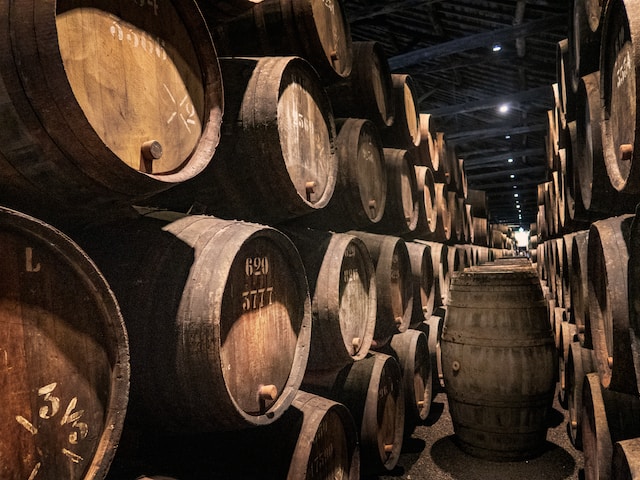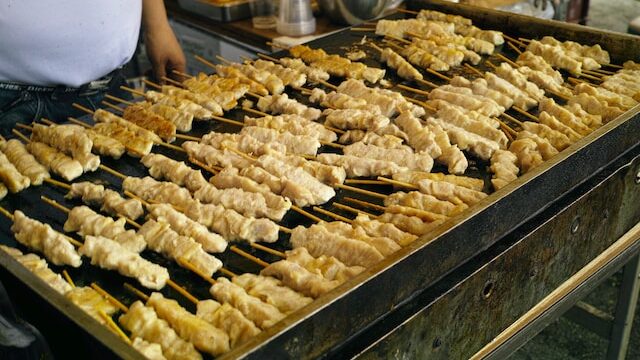Japanese whiskey has rapidly gained international acclaim, rivaling the traditional whiskey powerhouses of Scotland and Ireland. Known for its meticulous craftsmanship and unique flavor profiles, Japanese whiskey offers a fascinating experience for connoisseurs and casual enthusiasts alike. In this guide, we’ll explore some of the most renowned distilleries across Japan, their histories, specialties, and what makes them a must-visit for anyone traveling to the Land of the Rising Sun.
The History of Japanese Whiskey
The journey of Japanese whiskey began in the early 20th century, marked by the endeavors of two pioneering figures: Masataka Taketsuru and Shinjiro Torii. Their passion and vision laid the foundation for what would become a globally respected whiskey-making industry.
Pioneering Beginnings: Masataka Taketsuru and Shinjiro Torii
- Masataka Taketsuru: Often hailed as the “Father of Japanese Whiskey,” Taketsuru traveled to Scotland in 1918 to learn the art of whiskey-making. He immersed himself in the craft, studying at the University of Glasgow and working in Scottish distilleries. His return to Japan was with not only technical knowledge but also a deep appreciation for the Scottish culture of whiskey production.
- Shinjiro Torii: The founder of Suntory, Torii dreamed of creating a uniquely Japanese whiskey. He established the country’s first whiskey distillery, Yamazaki, near Kyoto in 1923. Torii’s vision was to blend the Scottish whiskey-making techniques with the delicate, refined sensibilities of Japanese taste.
The Birth of Japanese Whiskey
The first Japanese whiskey was released in 1929, marking a significant milestone in the industry. Initially met with skepticism, these whiskeys gradually gained acceptance, setting the stage for future growth and innovation. The early expressions were heavily influenced by Scottish styles, but with a distinct smoothness and subtlety that catered to the Japanese palate.
Post-War Expansion and Innovation
After World War II, the Japanese whiskey industry entered a phase of rapid expansion and experimentation. New distilleries emerged, and producers began to experiment with different types of barley, yeast, and aging processes. This era saw the creation of diverse flavor profiles, ranging from the light and floral to the rich and smoky, broadening the appeal of Japanese whiskey both domestically and internationally.
Global Recognition and Modern Era
By the late 20th and early 21st centuries, Japanese whiskey started gaining international acclaim. Prestigious awards and positive reviews in global competitions put Japanese whiskey on the map as a premium product. Distilleries like Nikka and Suntory became household names among whiskey enthusiasts worldwide.
The Current State of Japanese Whiskey
Today, Japanese whiskey is celebrated for its quality and uniqueness. The industry continues to thrive, with a focus on craftsmanship, innovation, and a deep respect for tradition. While facing challenges like supply shortages due to its unexpected popularity, the industry is adapting with new strategies, including the introduction of age statement whiskeys and limited releases.
The history of Japanese whiskey is a tale of blending tradition with innovation, creating a product that is both deeply rooted in its origins and boldly forward-looking. As we explore the distilleries and their offerings, it becomes evident that the story of Japanese whiskey is as rich and varied as the spirits themselves.
Must-Visit Distilleries in Japan
Japan is home to several world-class whiskey distilleries, each offering a unique glimpse into the art of whiskey making. Here are some of the most notable ones that aficionados and casual visitors alike should not miss.
Yamazaki Distillery
- Location: Nestled on the outskirts of Kyoto, in a region known for its pure water and rich history.
- Specialty: Yamazaki is renowned for its single malt whiskeys, which are characterized by their subtle and refined character.
- Tour Highlights:
- Visitors can enjoy guided tours showcasing the traditional whiskey-making process.
- Tasting sessions offer a chance to sample rare and aged whiskeys.
- The distillery is located near the confluence of three rivers, providing a serene and picturesque setting.
Hakushu Distillery
- Location: Situated amidst the deep forests of Yamanashi Prefecture, offering a cool and moist climate ideal for whiskey aging.
- Specialty: Known for its fresh, herbal, and lightly peated whiskeys.
- Tour Highlights:
- Nature walks in the surrounding forest provide a tranquil experience.
- The visitor center offers educational exhibits on the distillery’s history and production methods.
- Whiskey tasting sessions are paired with local cuisine, highlighting the harmony between the spirit and Japanese gastronomy.
Nikka Yoichi Distillery
- Location: Located in Hokkaido, Japan’s northernmost island, known for its rugged coastline and cold climate.
- Specialty: This distillery is famous for its rich, peaty whiskeys that are often compared to traditional Scotch.
- Tour Highlights:
- The distillery maintains its historic pot stills and traditional coal-fired distillation, offering a unique glimpse into the past.
- Guided tours provide an in-depth look at the whiskey-making process, from malting to aging.
- Visitors can sample exclusive distillery-only releases.
Chichibu Distillery
- Location: In Saitama Prefecture, a short trip from Tokyo, surrounded by lush mountains.
- Specialty: Chichibu is known for its innovative, small-batch whiskeys and experimentation with different cask types.
- Tour Highlights:
- The distillery tour focuses on the craft of small-scale whiskey production.
- Visitors have the opportunity to try limited-edition releases, some of which are highly sought after by collectors.
- The modern yet traditional approach of the distillery offers a contrast to the more established whiskey giants.
Miyagikyo Distillery
- Location: In a picturesque valley near Sendai, surrounded by mountains and rivers.
- Specialty: Miyagikyo produces a range of smooth and fruity single malts.
- Tour Highlights:
- The distillery features a unique combination of pot stills and Coffey stills, used for making grain whiskey.
- Tasting sessions include a comparison between different styles of whiskey produced at the distillery.
- The beautiful natural setting offers a peaceful backdrop for whiskey appreciation.
Mars Shinshu Distillery
- Location: Nestled in the Japanese Alps in Nagano Prefecture.
- Specialty: Known for its high-altitude whiskey aging, which imparts unique characteristics to the spirit.
- Tour Highlights:
- The distillery offers insights into the impact of altitude on whiskey maturation.
- Visitors can sample whiskeys that are exclusive to the distillery.
- The surrounding alpine scenery adds to the experience, making it a memorable visit for nature and whiskey lovers alike.
The Art of Tasting Japanese Whiskey
Tasting Japanese whiskey is an experience that engages all the senses, offering a window into the precision and care put into every bottle. This section will guide you through the essential steps and nuances of whiskey tasting, helping you appreciate the distinctive qualities of Japanese whiskey.
Understanding the Characteristics
- Color: The hue of a whiskey can range from light gold to deep amber, influenced by factors like the type of cask used for aging and the duration of maturation. The color can give the first clue about the whiskey’s character.
- Clarity and Viscosity: Swirl the glass gently and observe the ‘legs’ or ‘tears’ that form on the sides. This can give you an indication of the whiskey’s body and alcohol content.
The Aroma: Nosing the Whiskey
- Technique: Gently swirl the whiskey in the glass to release its aromas. Bring the glass to your nose and take a series of short, gentle sniffs. Let the aromas settle and evolve.
- Identifying Aromas: Japanese whiskeys often showcase a range of aromas from floral and fruity to smoky and spicy. Try to identify these layers and notice how they interact with each other.
The Palate: Tasting and Savoring
- First Sip: Take a small sip and let it coat your mouth. This first taste helps your palate adjust to the whiskey’s alcohol content.
- Savoring: On the second sip, focus on the flavors. Japanese whiskey is known for its balance and smoothness, often revealing notes of honey, citrus, oak, and subtle smoke.
- Texture and Mouthfeel: Pay attention to the texture. Is it light and silky, or rich and creamy? The mouthfeel is a crucial component of the whiskey’s character.
The Finish: The Aftertaste
- Length and Complexity: After swallowing, notice the flavors that linger in your mouth. A long, complex finish is often a sign of a well-crafted whiskey.
- Evolving Flavors: Some whiskeys may change character as they finish, revealing new layers of flavor that were not immediately apparent.
Advanced Techniques
- Adding Water or Ice: Experiment with adding a few drops of water to open up the whiskey’s aromas and flavors. Ice can be used to cool and slightly dilute the whiskey, which some drinkers prefer.
- Comparative Tasting: Try tasting different Japanese whiskeys side-by-side to appreciate the range of styles and flavors.
Appreciating the Uniqueness
Each whiskey has its own story and character, shaped by the distillery’s location, the ingredients used, the distillation process, and the aging conditions. By understanding and appreciating these nuances, you deepen your connection to the spirit and the rich traditions behind it.
Pairing Whiskey with Japanese Cuisine
Pairing whiskey with food is an art that enhances the dining experience, and Japanese cuisine, with its delicate flavors and diverse ingredients, offers a fantastic canvas for whiskey pairings. Here’s how you can pair Japanese whiskey with traditional dishes to create a harmonious and memorable dining experience.
Understanding Flavor Profiles
- Balance is Key: The goal is to match the intensity of the whiskey with the flavor of the food. Lighter, floral whiskeys pair well with delicate dishes, while richer, peatier whiskeys can stand up to more robust flavors.
- Complement or Contrast: Choose pairings that either complement the flavors in the whiskey (e.g., smoky whiskey with grilled dishes) or offer a pleasant contrast (e.g., sweet whiskey with salty dishes).
Pairing with Sushi and Sashimi
- Light and Delicate Whiskeys: Choose a whiskey with a light body and subtle floral or fruity notes. This won’t overpower the delicate flavors of raw fish.
- Suggested Pairing: A gentle, fruity whiskey with a clean finish complements the freshness of sushi and sashimi, enhancing the taste without dominating it.
Pairing with Yakitori and Grilled Meats
- Slightly Smoky Whiskeys: The smokiness of the whiskey can complement the charred, grilled flavors of the meat.
- Suggested Pairing: A medium-bodied whiskey with hints of smoke and oak pairs wonderfully with the savory flavors of yakitori, enhancing the umami experience.
Pairing with Tempura
- Crisp, Light Whiskeys: A whiskey that is light and crisp in flavor can cut through the oiliness of tempura without overwhelming its subtle taste.
- Suggested Pairing: A young, vibrant whiskey with a slight citrus note can provide a refreshing contrast to the richness of tempura.
Pairing with Ramen
- Rich and Complex Whiskeys: The complexity of ramen, with its rich broth and various toppings, calls for a whiskey that has depth and richness.
- Suggested Pairing: A full-bodied whiskey with deep, spicy notes can complement the complexity of ramen, particularly tonkotsu or miso-based ramen.
Pairing with Japanese Desserts
- Sweet and Smooth Whiskeys: Desserts often pair well with whiskeys that have a sweet, smooth profile.
- Suggested Pairing: A whiskey with notes of vanilla and caramel pairs delightfully with traditional Japanese desserts like mochi or dorayaki.
General Tips
- Experiment: Don’t be afraid to experiment with different pairings. Personal taste plays a significant role in what combinations work best.
- Serving Temperature: Consider the serving temperature of both the whiskey and the dish. Chilled whiskey can be refreshing with a hot dish and vice versa.
Planning Your Whiskey Tour in Japan
Embarking on a whiskey tour in Japan is an exciting venture, offering not just a taste of fine spirits but also an insight into the culture and beauty of the country. Here’s how to plan your tour for an enriching and smooth experience.
Best Times to Visit
- Seasonal Considerations: Spring (March to May) and autumn (September to November) are ideal for traveling in Japan due to the mild weather and scenic beauty. Whiskey distilleries are operational year-round, but these seasons offer the most comfortable climate for touring.
- Festivals and Events: Look out for local festivals and events, which can add a unique cultural dimension to your whiskey tour.
Booking Distillery Tours
- Advance Reservations: Many distilleries require or recommend advance reservations, especially for guided tours or special tastings.
- Language Options: Check if tours are available in your preferred language. Some distilleries offer tours in English, but it’s not universal.
Accommodation
- Proximity to Distilleries: Consider staying in accommodations close to the distilleries you plan to visit. Rural distilleries might have limited nearby options, so booking in advance is advisable.
- Experience Local Hospitality: Ryokans (traditional inns) near distilleries can provide a uniquely Japanese experience, often including local cuisine and sometimes even whiskey pairings.
Transportation
- Public Transport: Japan’s public transport system is efficient and can be a convenient option, especially for distilleries near major cities. Research train and bus routes in advance.
- Rental Cars: For remote distilleries, renting a car might be a better option. Remember that Japan has strict drunk-driving laws, so designate a driver if you plan to taste whiskey.
Cultural Etiquette
- Respectful Behavior: Familiarize yourself with basic Japanese etiquette, such as bowing and removing shoes when required.
- Drinking Etiquette: When tasting whiskey, show appreciation and avoid overindulgence. It’s not just about tasting the spirit but also respecting the craft.
Health and Safety
- Travel Insurance: It’s advisable to have travel insurance that covers medical emergencies.
- COVID-19 Considerations: Stay updated on travel advisories and health safety guidelines related to COVID-19 or other health concerns.
Creating a Balanced Itinerary
- Mix of Distilleries: Include a mix of large, famous distilleries and smaller, boutique ones to get a full spectrum of the Japanese whiskey experience.
- Other Attractions: Balance your tour with other attractions in Japan, such as historical sites, nature hikes, and culinary experiences.
Local Guidance
- Guided Tours: Consider booking a guided whiskey tour for expert insights and a hassle-free experience.
- Ask Locals: Engage with locals for recommendations on hidden gems or special events happening around the distilleries.
Conclusion
The world of Japanese whiskey is as deep as it is enchanting. Whether you’re a seasoned whiskey enthusiast or a curious traveler, Japan’s distilleries offer an unforgettable journey through taste, tradition, and innovation.





